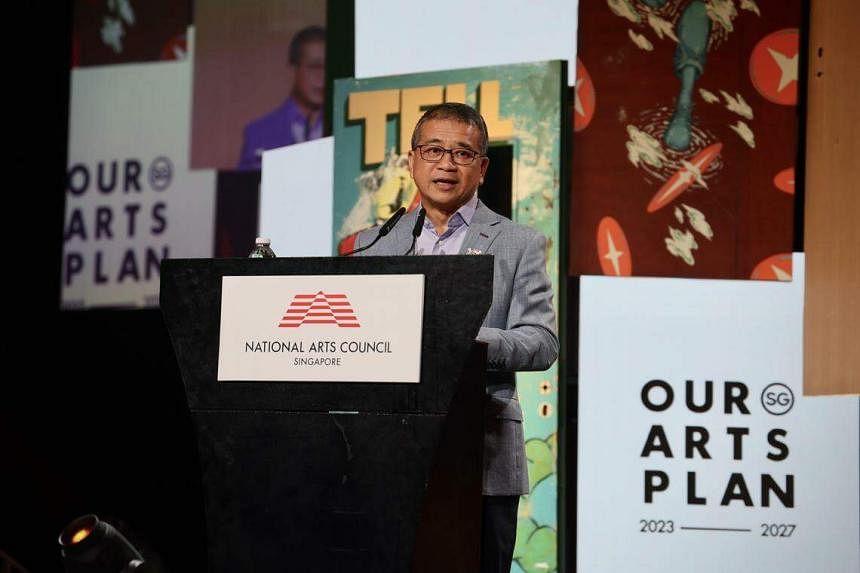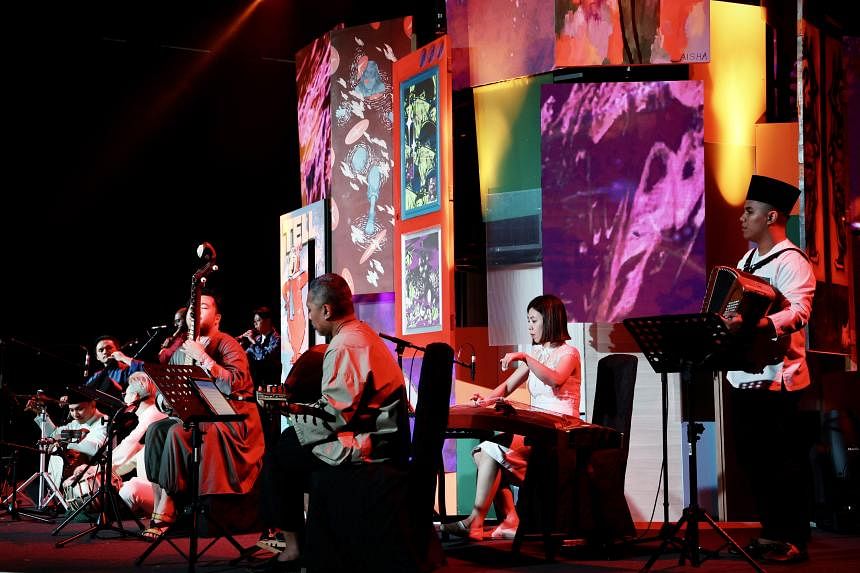SINGAPORE – Audiences, artists as well as public and private sector partners – the National Arts Council (NAC) wants to catch them all.
One key initiative targeting artists and audiences is Catch.sg, a new online platform which aims to be a one-stop shop for arts and culture for both demographics. Artists can list upcoming shows, while visitors can browse events for things to do and shows to watch.
The website, currently in beta mode, will soon also offer members-only privileges such as ticketing discounts, behind-the-scenes tours and other perks.
Catch.sg is one of eight initiatives under the NAC’s Our SG Arts Plan (2023 to 2027). The new five-year road map for the arts scene was launched at the Sands Expo And Convention Centre by Mr Edwin Tong, Minister for Culture, Community and Youth, and Second Minister for Law, on Tuesday.
NAC’s chief executive officer Low Eng Teong told The Straits Times the plan is “an invitation to build a more sustainable ecosystem, where the symbiotic relationship between art, artists and audiences is nurtured, sustained and celebrated. This requires a collective effort with all the stakeholders from the public, private and people sectors. As the National Arts Council, we will be the bridge to harness the energies and resources across the sectors”.
Partnership is key to the new plan, which the NAC envisions as a call to artists, audiences and patrons to help build an arts scene that they want to see.
The council consulted more than 16,000 stakeholders across various sectors as well as the general public from July 2021, and the feedback garnered has helped formulate this policy blueprint.
This builds on key elements from the first Our SG Arts Plan, which was launched in 2018 but derailed by the pandemic. The updated plan hopes to address various arts industry concerns, ranging from cultivating audiences to skills development for artists.
Catch.sg addresses concerns over audience attendance amid a crowded arts scene. The NAC’s biennial Population Survey of the Arts showed that although the public’s interest in the arts and overall arts engagement are rising, overall attendance at arts events dropped from 87 per cent in 2019 to 79 per cent in 2021. The 2022 survey found that attendance was 59 per cent, showing a slow return to pre-pandemic attendance levels.
Other initiatives riding on partnerships include the recently announced Memorandum of Understanding between NAC and SMRT Trains, which kicked off with music platform Hear65’s year-long I Play SG Music campaign. Singaporean music will be played at train and bus stations.
Also in the works are plans to allow buskers with disabilities at stations, and to showcase Singaporean poetry and prose in the four official languages in trains.
Two other collaborations will help promote home-grown arts content to a wider audience. The NAC is partnering Mediacorp to give Singapore art more exposure on the latter’s broadcast platforms as well as encouraging content creation with collaborations across the media and arts industries.
Marina Bay Sands, home of the ArtScience Museum, will share its arts industry expertise and international network with NAC and highlight Singapore-made content to visitors through arts and music programming in a new multi-year partnership.
The NAC is also working with the Housing Board and Urban Redevelopment Authority to promote the Lively Places fund, introduced in 2019. Under the fund, residents can apply for a grant of up to $25,000 to commission art to brighten their neighbourhood. A budget has been set aside for 60 commissions over three years for this project.
The push to highlight Singapore-made content extends into cyberspace with Project Arts Metaverse, supported by an industry-led Alliance for Action, which will support arts companies’ experiments in the digital realm.
Artists who want to experiment with technology in their practice can also find support in the Arts x Tech Lab incubation series, which brings practitioners together with technology professionals in workshops.
The Covid-19 pandemic highlighted the needs of many in the arts who are self-employed or gig workers. As such, a Skills Framework for Arts has been jointly developed by NAC, SkillsFuture Singapore, industry partners and institutes of higher learning. It maps out career progression and needed skill sets for arts sector professionals so they can equip themselves for the industry.

Assistant Professor Hoe Su Fern from the arts and culture management programme at the Singapore Management University applauded the identification of partnership models as “the foundation for tangible implementation and delivery, especially in terms of building and sharing collective resources”.
But she added that “there needs to be further acknowledgement of the widespread diversity and persistent inequities in the arts”, pointing to the persistent financial precarity for arts workers and highlighting that the plan’s emphasis on entrepreneurial arts companies and internationalisation might also pose the danger of deepening existing disparities.
She said: “Ultimately, for the arts plan to work, NAC also needs to ensure accountability by considering the release of a clear delivery and operational plan.
“Currently, without tangible details on implementation, it leaves difficult questions of how Our SG Arts Plan’s rhetoric will be translated into actual actions for specific parts of the arts sector.”
Editor’s note: This article has been edited for accuracy.


